| Estes Sites: |
 |
 |
 |
 |  |
| Estes Sites: |
 |
 |
 |
 |  |
This page is an extract from "The Estes Family" by Stewart Estes, (c) 2009
THE FIRST GENERATION
NICHOLAS1 EWSTAS (EASTES)1
(1495 eng. -1533/4 Eng.)
&
ANNY ---
(c. 1500 eng. – aft 1533/4 Eng.)
“Nycholas1 Ewstas” (Eastes/Estes) was born about 1495, possibly in Deal, County Kent, England, and died perhaps, before age 40 in 1533, at Deal, Kent. Nicholas married about 1520, in Deal, Kent, Anny (last name unknown).
Nicholas’ will, dated 1 January 1533/4, distributed his modest estate to his wife “Anny;” his one known child, Sylvester, and to Felyx Beane. Nicholas’ great-granddaughter Alice Eastes, daughter of Robert, married Thomas Beane in 1628 at Ringwould. See discussion supra at 51. The will decreed that he was to be “buryed in the church yerde of Saynt Leonard in the parisshe of Deale.” 2
The child of Nicholas and Anny Eastes is:
1. Sylvester Eastes, born 1522, Deal, Kent.
The earliest records of the Estes surname are in Kent. Nicholas, progenitor of most, if not all, of those claiming Estes ancestry today, died in 1533; leaving a wife and young son (no other children are listed). Nicholas' birth has frequently been claimed to have been in 1495 at Deal, Kent. However there is no proof of this. The 1495 date is a guess based on his marriage in 1520. The location is even more uncertain. All we do know is that he lived his last years in Deal and died there.
“There are many rumors and theories of Nicholas’ heritage but so far, no evidence has been found. Records for this period are scarce to non-existent. When found they are difficult to interpret as many are in Archaic Latin. The hereditary use of surnames originated among the Venetian aristocracy in Italy during the 10th and 11th centuries. Crusaders noted this practice and when returning from the Holy Land, the custom soon spread throughout Europe and the British Isles. In nearly every case, surnames were used first by nobility and wealthy landowners, then it filtered down to merchants and commoners. By the mid 15th century, most people regardless of status had a fixed hereditary surname. The preservation of the family name became a matter of pride and to identify it into the future. 3
“Apparently, this practice was in its infancy when Nicholas was born in 1495. It should also be noted that people had a habit of changing the surname about that time. These variations could have been due to personal choice but we know they leaned heavily on phonetic spelling so the changes may have been influenced by a difference in regional dialects and a high rate of illiteracy.”
The Last Will and Testament of
Nicholas Ewstas of Deal, 1533
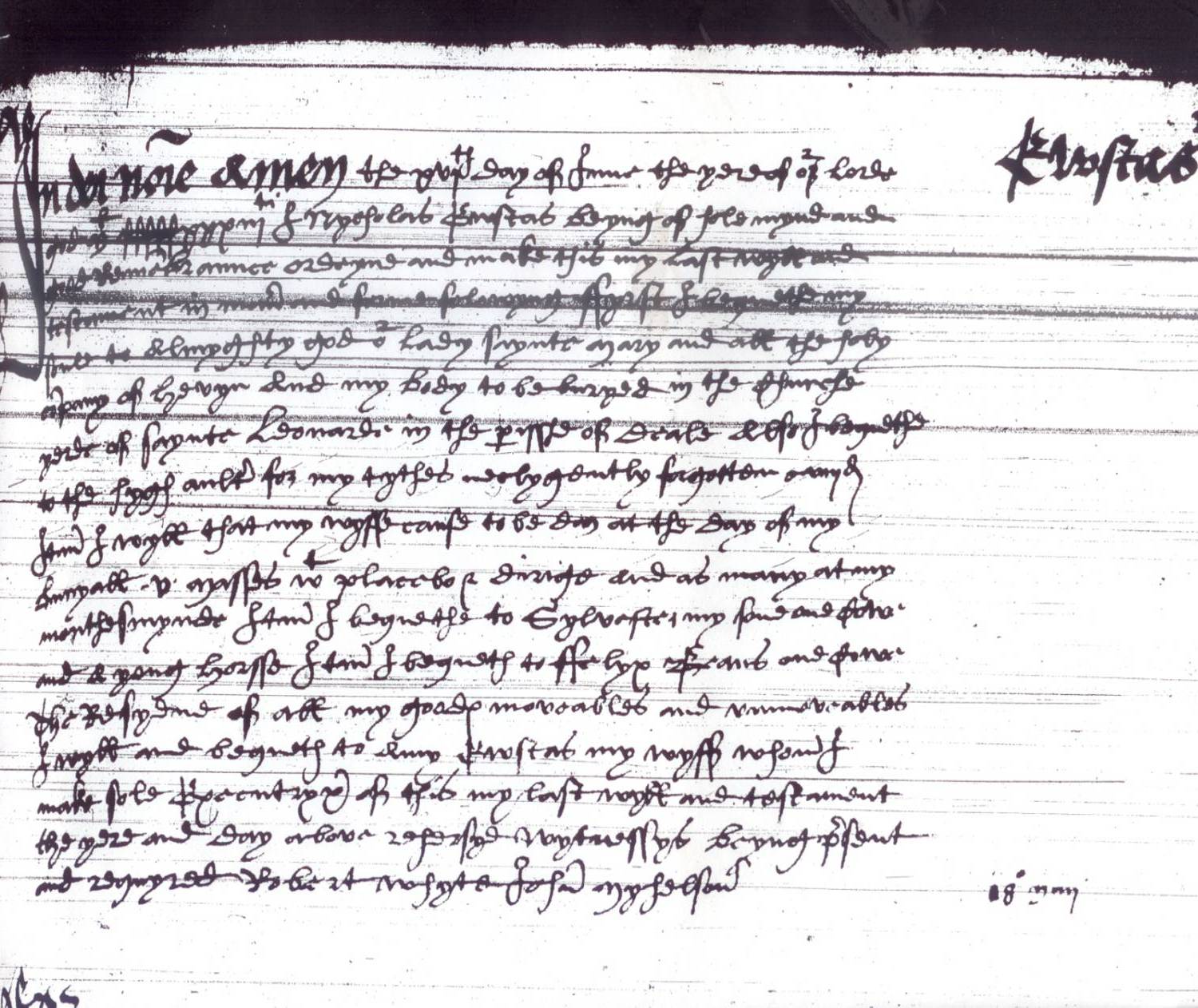
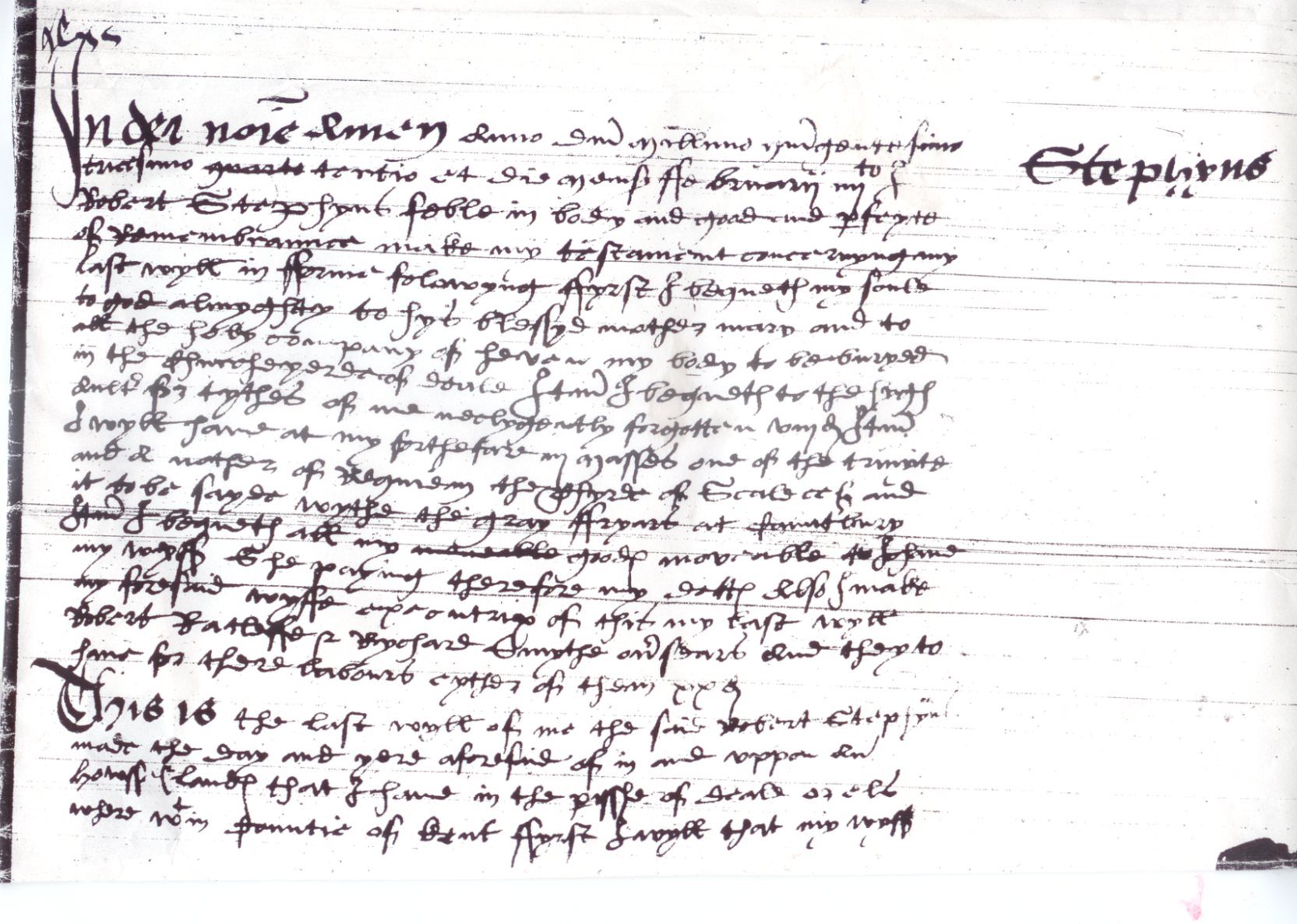
Will of Nicholas Ewstas
(In original archaic text) 4
In dei no'ie Amen, the xviith day of June the yere of our Lorde mlcccccxxxiiith, I Nycholas Ewstas beyng of hole mynd and remembraunce ordeyne and make this my last Wyll and Testament in manner and form folowyng
Fyrst I bequethe my soule to Almyghty God, our Lady Siynte Mary and all the holy company of Hevyn and my body to be buryed in the church yerde of Saynte Leonarde in the parisshe of Deale.
Also I bequethe to the hygh aulter for my tythes undelygently forgotten viiid.
Item I wyll that my wyffe cause to be dun at the day of my buryall v mases with placebs and dirige and as many at my monthes mynde.
Item I bequethe to Sylvester my sone one ewe and a yong horsse.
Item I bequethe to Felyx Beans one ewe.
The resydue of all my goodes, moveables and unmoveables I wyll and bequethe to Anny Ewstas my wyff whom I make sole Executrix of this my last Wyll and Testament the yere and day above rehersyd.
Wytnessys beyng present and requyred Robert Whyte,
John Myselson
Modern English Translation
In the name of God, Amen, the 17 day of June the year of our Lord 1533 I, NYCHOLAS EWSTAS, being of whole mind and remembrance ordain and make this my last Will and Testament in manner and form following,
First, I bequeath my soul to Almighty God, our Lady Saint Mary and all the holy company of heaven and my body to be buried in the church yard of Saint Leonard in the parish of Deal.
Also I bequeath to the high alter for my tithes undiligently forgotten 8 pence.
Item, I will that my wife cause to be done at the day of my burial five masses with placebos and dirige and as many at my month's mind.
Item I bequeath to Sylvester, my son, one ewe and a young horse.
Item I bequeath to Felix Beans one ewe.
The residue of all my goods, moveables and unmoveables I will and bequeath to Anny Ewstas my wife whom I make sole Executrix of this my last Will and Testament the year and day above rehersed.
Witnesses being present and required
Robert Whyte, John Myselson5
Estes Trails editor and family researcher Larry Duke has explained the various bequests and provisions in the will as follows:
If Nicholas had the money to give to his church, his "negligently forgotten" tithes, he must not have been a poor man. The Ffelyx (Felix) Prins, [in some transcriptions “Beans,” note 24] could have been a friend or relative or someone that he owed a debt to. As no boats, nets or fishing equipment were mentioned, it would be safe to assume that Nicholas was not a fisherman. Nicholas' request for a placebo was for evening prayers or vespers and a dirge would have been the singing of a funeral hymn.
His reference to his monthemynde (monthmade) is the same as our birthday. The saying of a mass for the deceased, in their memory, on their birthday, is still a common practice in the Catholic Church. The only other observation that could be made about Nicholas' will, is that it was uncommon to name ones wife as executor. Normally, this duty was left to ones oldest brother or oldest son. His naming Anny could mean that he had no living brothers or none nearby. [His son] Sylvester was too young, being only about 11 years old.6

THE SECOND GENERATION
SYLVESTER2 EASTES
(EUSTAS or EASTYE)
(1522 Eng. – 1579 Eng.)
&
JONE - - -
(c. 1525 Eng. – 1561 Eng.)
Sylvester Eastes (Ewstas, Eustas or Eastye) was a fisherman, born 1522, probably in Deal, Kent. Sylvester “Eastye” was buried 7 June 1579, in the Ringwould church cemetery, Kent. He married Jone --- at Deal in 1545. Jone “Eustes” was buried 16 May 1561, in St Leonard Parish, Deal, Kent.7
On 10 December 1549 Sylvester, along with John Lamond, appeared before the Consistory Court of Canterbury (approximately 20 miles from Deal), charged by the Rector of Deal for not paying their tithes from their herring catch. Lamond asserted that "in the time of his rememberance ... he paid no tithe." Sylvester responded that in the past two years he and his colleagues had taken two or three "last" (a dozen 6-9 pound barrels) and that "the school of herring hath always comined there away but they had not netteth there to take them well before that time." It has been suggested that the failure to pay the tithe was a political gesture, rather than just oversight, church tithes becoming increasingly unpopular at that time.
Their three children, Jone, Henry and Robert “were raised at Deal in Kent, on the east coast of Britain, near St. Leonard's Church, of which they and their families were members.”8
The children of Sylvester2 Eastes and Jone --- are:
1. Jone Eastye, born 1547 at Deal, Kent, married on 9 July 1563, at Ripple, Kent Henrye Baker, born in 1546, they had a daughter, Jone, who married her cousin Henry Estes, the son of her own brother;
2. Henry Eastye, a fisherman and master-owner of a pinasse (two masted vessel), the Mynion, born in 1549, at Deal, Kent, He married Mary Rand on 3 July 1574, in Deal, Kent. “Henry Eastice of the parish of Deale in the County of Kent fisherman,” made his will, 30 April 1590, (“this XXXth day of Aprile”) at Deal. Mary was buried 19 June 1601 at St Leonard’s, Kent;
3. Robert3 Eastye, mariner, born about 1555 at Deal, Kent, died about 1616 at age 61 in Ringwould, Kent. He married Anne Woodward on 2 December 1591 at Sholden, Kent. Anne was born about 1574 (or in 1570), died between the making of her will on 21 April 1630 and when she was buried on 18 May 1630 at Ringwould. Robert and Anne spent the first few years of their married life at Sholden, moving to Ringwould about 1595.
HENRY ESTES
(c.1555 Eng. -1590 Eng.)
Brother of Robert Sr.
Henry Estes, born about 1555 based on the date of marriage to Mary --- around 1576, died after he made out his will on 30 April 1590 but before his widow was named executor on 30 June 1592. Mary was buried at St. Leonard's on 19 June 1601.9 Four children are known to have been born to this union.
The children of Henry Estes and Mary Rand are:
Richard Eastye (Estes) of Deal, was born in 1578/9, married Agnes Dove, and had son Richard, born 13 October 1605, and married Sarah Norman, and had son Moses Estes, born 12 November 1643, died 19 March 1707/8, see headstone below;
Henry Estes of Deal, was baptized at St. Leonard's Church on 6 April 1581.
Mary Estes was baptized at St. Leonard's Church on 15 January 1586/7. Her burial is recorded at St. Leonard's on 29 December 1587;
Aron Estes was baptized at St. Leonard's Church on 6 July 1589. Little is known of him;
Henry Estes, Fisherman of Deal, must have been a man of means or married well, for in his 1590 will he left a two-masted sailing vessel (known as a pinnace) and other property to his three sons. As they were very young, Henry's brother Robert (our ancestor), was named executor. The oldest son would usually have served in this capacity, but Richard was only twelve. While we do not have his father Sylvester's will, we discover from his grandfather Nicholas’ will that the family was of modest means and vessel ownership in only one generation is remarkable.
Henry had his name recorded at different times as Este, Ewstas, and Eastes, and made out his will as Henry Eastice, on 13 April 1590, but left it unsigned.10 On 30 June 1592, Mary was named administrator, after brother Robert declined. Robert and a Jacobus Whit were made to post a bond of £30 with the Canterbury Court anyway. Robert is listed as a sailor and Jacobus Whit as a yeoman, or small farmer.
Last Will & Testament of Henry Eastice
In the name of God Amen, I Henry Eastice of the parish of Deale in the County of Kent, fisherman, being in perfect mind and memory thanks be to almighty God so makde this my last will and testament this XXXth daye of Aprile in the year of our Lord 1590 in for and manner as follows. First, I commit my body to be furied in tthe parish churchyard fo Deale hopeing to have my sines pardoned by the death of Jesus Chirst. First, my will is that my pinase with appurtenances belonging thereto and one hempe pot lying before by gat shall remyn unto my three sons Rychard, Henry and Aron equally to be divided and if any of them or they shall happen to dye, then tthe one shall be the others heire and moreover my mind is that as as long as my wife shall keep herself a widow that she shall have the house, keping to wind tite and water tite neither skipping nor wasting, but if she shall happen to mary then my mind is that she shall have nothing to do with my house and household but presently to returne unto my sonnes.
Item I give unto my wife my bort, and my best feather bed with one bolster an one coverlet, and the bedsteddel wherin it nowe standeth.
Item I give unto Rychard, one raper, and unto my sonne Henry one sword.
Item I give to my youngest sone Aron, a great chest with a flat lid and to my sone Henry, one great ship chest.
Item I give my sylver (silver) whistle unto my sonne Henry.
Item I will that my wife shall sell one caliber, one handyoorne, and one crossbowe, for the bringing up of my children, and also all such planks, boards and timbers is about my place, my wife shall sell for the behaulf of my children.
Item I give unto Aron, my sonne a payr of diaper chests.
Item I give unto Henry my sone my clocke.
Item I give unto Aron my black breches.
Item I give my worst featherbed unto Aron my sonne.
Item I give unto Rychard my sonne, (one) diaper chest and one diaper tablecloth.
Item I give unto my wife firesheet and one small table with two lockes and syx (six) putere platters.
Item I give my beast (best) candlestick unto Aron, my sonne and the beast saving one unto Henry my sonne and the other unto Rychard.
Item I give my great table unto Aron my youngest sonne.
Item I will that my wife shall keep every year one tree as long as the ground shall aforde it, for fire.
Item I give to my sone Rychard, one sprat net and to my wife another and to eche (each) of my sonnes, a herryng net.
Item I give haufle (half) a barrel of tarr unto my wife.
Item my will is that my sones shall come to ther part of the house when they come to the age of XIXth yeares.
Item I will that none of my sones shall sell ther part of my house to any man. I make my brother Robert Eastice my whole executore and my whole overseer.
A note of such debts as I owe I owne unto Myles ffuler (Miles Fuller) Xs (10 shillings) formost, which sum of money my house rent which I am to receyve (receive) of Thomas Swayne shall discharge.
Item Bryant Gibbons oweth me xviijs (17 shillings)
Church records also show that Henry had a ship registered in his name in 1586. The Mynion could possibly be the pinnace mentioned in the will. The "bort" for his wife, referred to a flawed diamond. The "raper" (rapier) given to Richard is a small thin bladed sword, like a fencing sword and usually only wore by gentlemen. In directing that his wife sell off some of his weapons, he refers to "one caliber", which would have been a gun, likely a shoulder weapon. While a crossbow is understood, the reference to the "handyoorne" is more difficult, but probably means a hand iron, a hand gun or pistol.
The planks, boards and timbers "about his place" would have been important to a ship owner. His reference to diaper chests and tablecloth is also interesting. The term diaper at the time usually meant a diamond patterned fabric but also just to the diamond shaped pattern itself. Perhaps this was a favorite or family design. Also telling, about the wealth of the family, is the mention of a clock. The first English standing clock was only developed in 1585 and a good clock or time piece was indispensable to anyone involved in sailing the seas. Likewise, the granting of one tree, for firewood, "as long as the ground shall aforde it", was very important. By the end of the 16th century in England, most of the land had already be deforested and wood was at a premium.
Son Richard (of Deal), on the other hand, has left a very long family line. Richard married Agnes Dove at Ringwould, on 24 November 1603. To this marriage only two children are recorded. Richard (II), baptized at St. Leonard's Church, 13 October 1605 and Annis, baptized July 26, 1618. She later married John Bowen of Northbourne in 1645. Their father, Richard was buried at St. Leonard's on 21 February 1625/6. It appears from a will for Richard, that one of his sailing ships was captained by a Thomas Coppin of Ramsgate (a nearby community).11
Henry’s grandson Richard Estes II, was married on 8 October 1627, at St. Leonard's, to Sara Norman. In his later life, he was briefly married a second time, to Mary Hyle or Hild, a widow. They were married on 31 March 1673, but Richard died shortly thereafter and was buried at St. Leonard's on 31 May 1673. He left a will, dated May 27th. It was probated on June 23rd.
The children of Richard Estes II and Sara Norman are:
1. Aaron, baptized at St. Leonard's, December 11, 1631. Aaron was probably named for his uncle, Aron. Aaron was a mariner and was married to Susanna Whetstone on April 11, 1653. They had six children. Oldest child, Nicholas, a mariner, born in late 1653, married Elizabeth Sprusham at Canterbury in 1677. Nicholas was a lieutenant on the fire-ship, HMS Vulture. He died on an outward bound voyage to the West Indies in June of 1707. Aaron's fourth child, Elizabeth, was born in September of 1660 and is known to have married a man named Nathaniel Hatch of Boston, Massachusetts. They were married October 9, 1684 and went back to America to live;
2. Sara, baptized June 10, 1633, was later to marry Stephen Mumbray, on December 4, 1651;
3. Mary, baptized June 28, 1635, later married to Jeffery Saffery, of Lower Deal, on February 18, 1656;
4. Richard (III) was the fourth child and was baptized at St. Leonard's on 19 February 1636. He married Sarah Bridger of Sandwich in 1656 and they had four children. He was buried at St. Leonard's on 30 May 1663.
5. John, baptized 18 November 1638, lived only a few years and was buried at St. Leonard's on 23 May 1646.
6. Ann, born in 1641, died in infancy.
7. Moses, the first in a long line of Moses Estes', was baptized on 12 November 1643. It is through Moses that the two Estes families are doubly related.
8. Samuel, born in December of 1646, married Elizabeth Sillary at Ripple in 1666. He was also known to be a mariner.
9. John, named after the son who died in 1646, was baptized at St. Leonard's on 2 September 1649. He married Sarah Banes on 2 March 1673 and they are known to have had eight children. He died in late November, 1695. John was a sailor in His Majesty's (William, III) Service.
10. Ann, named after the daughter who died in 1641, was born in November of 1651 and was married on 4 November 1669 to John Bowen, a seaman. Bowen was probably her cousin, by the marriage of her aunt, Annis and John Bowen.
Moses Estes, the seventh child of Richard and Sara, was married on November 30, 1663 to Mary Mumbray. This Mumbray was probably the younger sister of Stephen Mumbray, who was married to Moses’ older sister, Sara. Mary lived only one year after this marriage. She was buried at St. Leonard's on 29 November 1664, leaving an infant daughter, also named Mary, who died shortly thereafter. Sometime after Mary's death, Moses married again, this time to Ellen Estes. Ellen was the daughter of Sylvester and Ellen Estes of Ringwould. Moses' wife, Ellen, was a full sister to Abraham Estes, our direct ancestor and the first of the line to come to America. Moses died in March of 1707 and was buried at St. Leonard's in Deal. His headstone there is carved with a skull and cross bones and an hourglass. While today, this sign would be somewhat sinister, in the early 18th century, it probably stood for, "no one knows the time of their death" or marked an untimely death. He was followed in death by Ellen in December of 1729. They had four children that are known: Richard, January 1667 who died an infant, Constant, born December 1669, died November 1708, Aaron, born February 1671 and Samuel, born February 1674.
This Samuel married Ann Reed, at St. Mary the Virgin, Aldermanbury, London on 25 October 1704. He died in 1745, but left the following children: Moses, born August 1710, Ann, born December 1713, Samuel, born November 1719 and Thomas, born October, 1721. Moses and Thomas may have come to America. One of these brothers had a son named Moses, who settled in Virginia in 1783. This branch of the Estes family and our direct line continued to live in the same areas of Virginia, North Carolina and finally Tennessee. It appears that they continued to inter-marry from time to time as well. There is a bill for six shillings from Samuel, dated 13 May 1737, for a shroud and black cloth for a Mr. Fuller. Henry Eastice, Fisherman of Deal also mentioned a Mr. Fuller in his will.
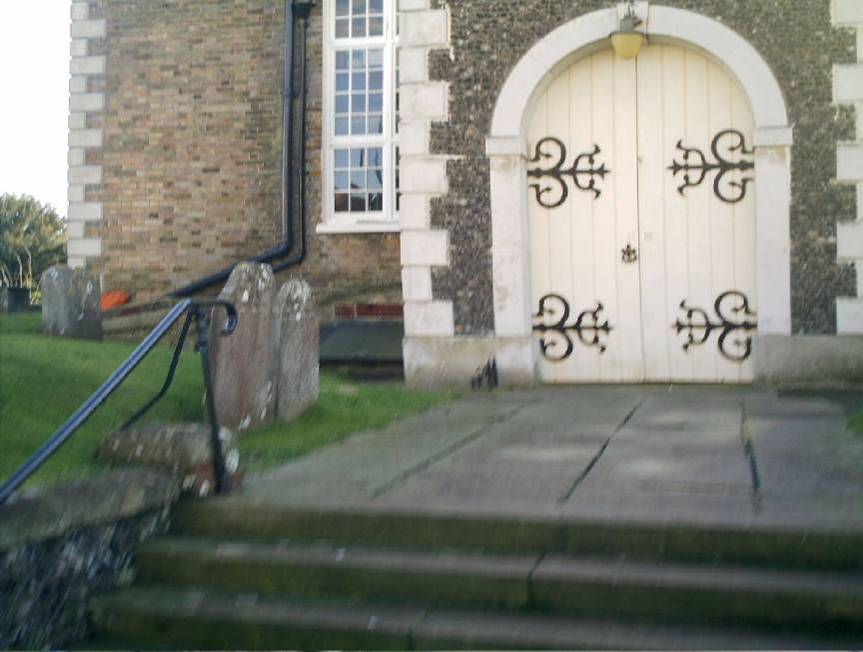
St Leonard’s Churchyard, North Porch
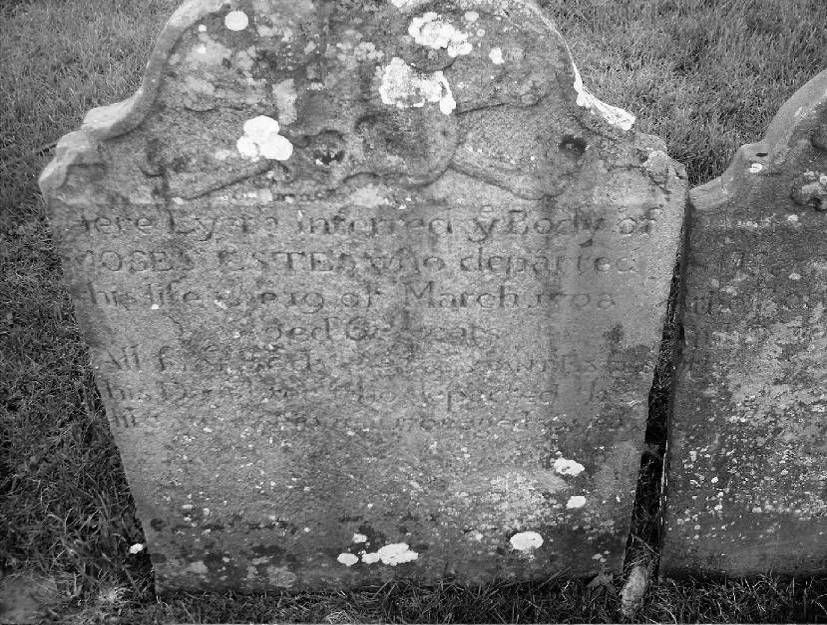
Headstone of Moses Estes,
Great-grandson of Henry3 Eastye Above
(only remaining St Leonard’s Estes headstone)
“Here lyeth interred ye body of Moses Estes
who departed this life 19 of March 1708
Age 65 years.
Also ye body of Constance Estes his daughter who
departed this life November 1708 aged 36 years”
TITHES
From the above history of Sylvester Eastes, it appears that he was an early tax protester. A tithe (from Old English teogoþa "tenth") is a one-tenth part of something, paid as a usually voluntary contribution or as a tax or levy, usually to support a church. Historically tithes could be paid in kind, such as agricultural products. Farmers had to offer a tenth of their harvest, while craftsmen had to offer a tenth of their production.
In the Middle Ages the tithe from the Old Testament was expanded, through a differentiation between a Great Tithe and a Little Tithe. The Great Tithe was analogous to the tithe in the Bible where one had to tithe on grain and large farm animals. The Little Tithe added fruits of the field: kitchen herbs, fruit, vegetables and small farm animals.
After the Reformation the tithe was increasingly taken over from the church by the state. In England, church tithes remained until the 19th century. The right to receive tithes was granted to the English churches by King Ethelwulf in 855. The Saladin tithe was a royal tax, but assessed using ecclesiastical boundaries, in 1188. Tithes were given legal force by the Statute of Westminster of 1285. The Dissolution of the Monasteries led to the transfer of many tithe rights from the Church to secular landowners, and then in the 1530s to the Crown.
Tithes of fish (and mills) were the last survivors of what were referred to as personal tithes. Traditionally, fish taken from the sea or common rivers were not titheable under the principal that they were ferae naturae or wild animals. The only exception was if a local custom existed.
A 1549 statute made a tithe of fish payable only in parishes where it had customarily been paid within the past 40 years, such as those on the sea coast. This would likely include Kent. The system ended with the Tithe Commutation Act 1836, which replaced tithes with a rent charge decided by a Tithe Commission. 12

THE THIRD
GENERATION
ROBERT3 EASTES, SR.
(1555 Eng. – 1616 Eng.)
&
ANNE WOODWARD
(1574 Eng. – 1630 Eng.)
Robert3 Eastes, Sr., mariner, was born 1555 at Deal, and died about 1616 at age 61 in Ringwould, Kent. He married Anne Woodward on 2 December 1591 at Sholden, Kent. Anne was born about 1574 (or in 1570), and made her will on 21 April 1630. She was buried on 18 May 1630 at Ringwould; her will was probated on 9 June 1630, and listed nine children. Robert and Anne spent the first few years of their married life at Sholden, moving to Ringwould about 1595.13
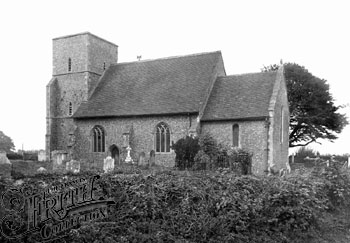
Sholden Church, 1918
1. Matthew Eastes, baptized 11 June 1592 at Sholden, Kent, died as infant.
2. Sylvester4 Eastes, baptized 26 September 1596 at Ringwould, Kent;
3. Alice Eastes, baptized 26 March 1597 at Ringwould, Kent, she married Thomas Beane14, 28 October 1628 at Ringwould, Kent, and had children: Christopher (1628); Richard (1632) of St. Mary the Virgin, Dover, Kent; Mary (1636) of Great Mongeham, Kent; Sarah (1638) of Westminster, London; Judith (1642); and, Thomas (1643) of All Hallows Staining, London.
4. Matthew Eastes, mariner, born 1601, Ringwould, Kent, died 1621, buried 4 June 1621, St Leonard’s, Deal, Kent, he married Margaret Johnson, 23 November 1620, Deal, Kent. Margaret died 1622 and was buried 15 October 1622, St Leonard’s, Deal, Kent. Children: Martha (1621) of Deal, Kent, and William (1621-1687) of Ringwould, Kent.
5. Robert Eastes, Jr. was baptized 29 May 1603, Ringwould, Kent, he married Dorothy Wilson, 31 January 1634, Ringwould, Kent. Children: Robert (1635), Thomas (1636), Sylvester (1638), Sarah (1640), infant (1643) of Ringwould, Kent, Matthew (1645-1723) and Richard (1647-1737), both born at Dover, Kent and died in America.
6. Thomas Eastes, baptized 2 June 1605 at Ringwould, Kent, died in 1671, at Ringwould, Kent, he married Joan Wilson, 21 November 1636, at Ringwould, Kent. Joan died 1672, at Walmer, Kent. Children: John (1642), John (1645), Joan (1645) and Robert (1647) of Ringwould, Kent.
7. Susan Eastes, baptized 30 October 1608 at Ringwould, Kent.
8. John Eastes, baptized 3 March 1610 at Ringwould, Kent, he spent the latter years of his life in poverty, living on parish assistance. John died in 1684, at Ripple, Kent. He married unknown, and had son John, born 1642 of Eastry, Kent.
9. (Male) Eastes, born in 1616 at Ringwould, Kent, died at birth.
Ringwould and Sholden
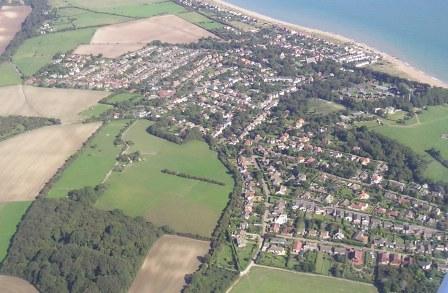
Kingsdown
The small village of Ringwould lies on the A258, the main road between Dover and Deal, it has a population of about 350, this has remained roughly the same for the last 200 years, although the number of houses in the village has doubled in that period. Today Ringwould is a quiet village with a Pub, a Church and a village hall. The school moved to Kingsdown in about 1980 and the Post Office closed not long after.15
The village was first recorded more than 200 years before the Domesday survey, in an Anglo-Saxon Charter dated 861 AD under the name of Roedligwealda (the forest of Hredel’s people). The site of a Roman period farm has been identified close to the present Ripple windmill; which is in the parish, although metal detector finds and other relics which have been found, suggest that the area was populated well before the Roman invasion. The oldest coin ever found in England was discovered by a metal detectorist working close to Ringwould. It seems probable that the village was established sometime during the Anglo-Saxon period, probably in the 6th century AD, and certainly well before the Norman Conquest of 1066.
By the late Norman period the timber Anglo-Saxon Church had been replaced by the present parish church. It has grown with the settlement and still contains a record of the alterations made through the centuries in its fabric.
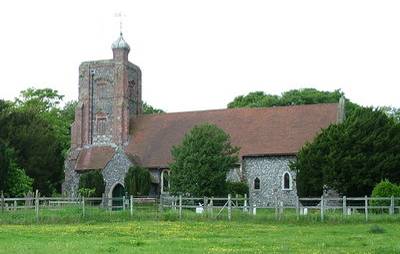
St Leonard’s Church, Ringwould

THE FOURTH
GENERATION
SYLVESTER4 EASTES
(1596 Eng. – bef. 1649 Eng.)
&
ELLIN MARTIN
(C. 1600 Eng. – 1649 Eng.)
Sylvester Eastes, husbandman and yeoman16 of Ringwould, Kent, was baptized 26 September 1596 at Ringwould, Kent, and died before 1649, at Ringwould, Kent (he is not mentioned in his wife’s will). According to Deal Parish records, he was a "sometimes churchwarden.” Sylvester married on 24 November 1625, at Ringwould, Kent, Ellin Martin. Ellin was born about 1600 at Great Hadres, Kent, and died in 1649 at Ringwould, Kent, two years after the birth of her last child, and our ancestor, Abraham. Ellin's will states she was born at Waldershire, but at her marriage she gave her origin as Great Hadres, and her name perhaps as “Hellen Martine.”

Ringwould Bishop’s 1625 Note of Marriage,
Excerpt, full page below
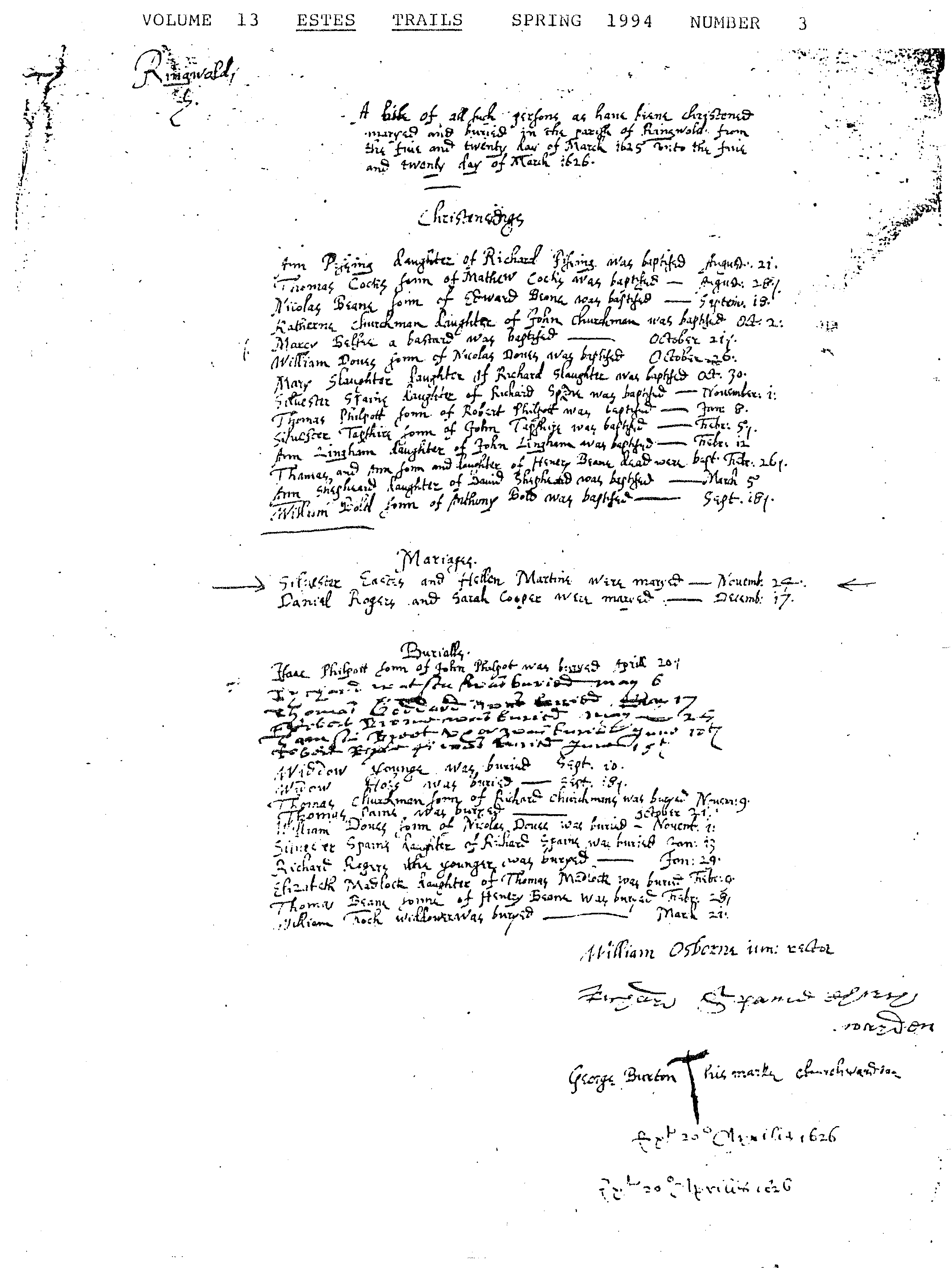
1. Robert Eastes, baptized 10 September 1626, Ringwould, Kent, died 1692 and buried 23 June 1692, Waldershire, Kent, married Elizabeth, who died in 1676 at Waldershire, Kent, and was buried 8 August 1676. Married second Margaret Coachman, 26 June 1688, Hadres, Kent. Children: Robert (1652), Elizabeth (1653), Susan (1655), Silvester (1657-1692) of Waldershare, Kent;
2. Anne Eastes, baptized 25 November 1627 at Ringwould, Kent, died young;
3. Silvester Eastes, baptized 31 May 1629 at Ringwould, Kent, married --- Nash.
4. Susan Eastes, baptized 30 March 1631 at Ringwould, Kent.
5. Thomas Eastes, baptized 20 January 1633, Ringwould, Kent, died 15 April 1682, Pelham, Kent, married Sarah and had children: John (1665) of Waldershare, Kent, and latter of Acrise, Kent.
6. Richard Eastes, baptized 5 October 1634, at Ringwould, Kent.
7. Mary Eastes, baptized 2 October 1636 at Ringwould, Kent.
8. Anne Eastes, born 1637 at Ringwould, Kent. [There is some doubt as to whether this child belongs to this family.]
9. Nicholas Eastes, yeoman, baptized 9 December 1638 at Nonington, Kent, married Jane Birch, died 1665, Sutton, Kent. Children: John (?-1715) of Sutton.
10. Elizabeth Eastes, born 1639/40 at Nonington, Kent.
11. Ellen Eastes, baptized 11 December 1642, Nonington, Kent, died 1729 and buried 26 December 1729 at St Leonard’s, Kent. Married Moses Eastes, 23 December 1667, at Deal, Kent. Moses was baptized 12 November 1643 at St Leonard’s, Kent and died at Deal, 19 March 1707/8 & buried 23 March, at St Leonard’s, Kent. Children: Richard (1667/8-1668), Constant (1669-1708), Aaron (1671) & Samuel (1674/5), of St Leonard’s, Kent.
12. John Eastes, baptized 29 December 1644 at Nonington, Kent.
13. Abraham5 Eastes, born 1647 at Nonington, Kent, married Anne Burton (widow), 29 December 1672, at Worth, Kent, and married secondly Barbara Brock, 1684, at St Stevens, Virginia. Barbara was born in 1662 or 1667 in King and Queen, County, Virginia, and died 1720 in Amelia County, Virginia. Abraham died in the parish of St Stevens in King and Queen County, Virginia, in 1720.
1649 WILL OF ELLIN ESTES
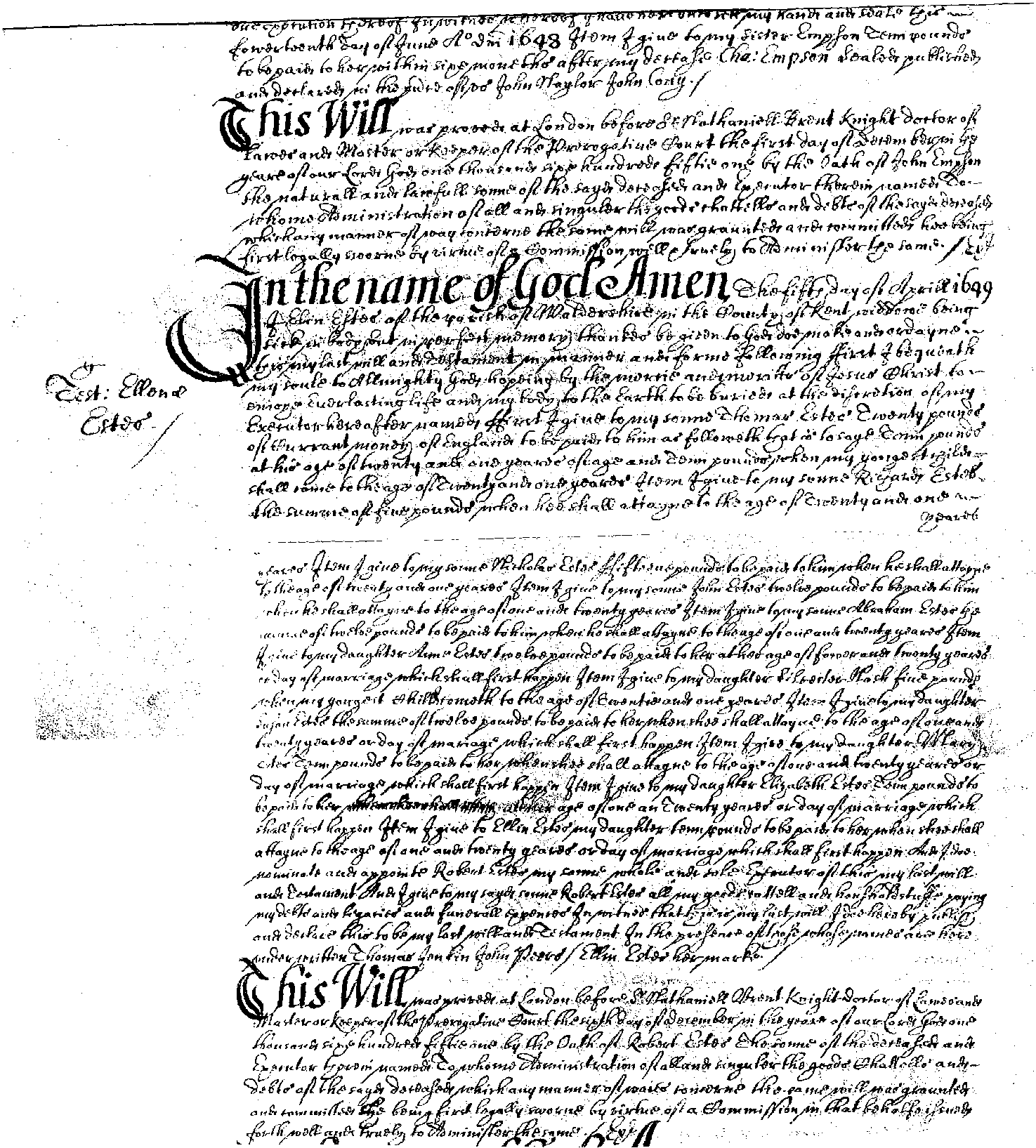
Translation of Ellin’s Will
In the name of God, Amen, the fifth day of April 1649, I, ELIN ESTES [sic] of the parish of Waldershire [sic] in the County of Kent widow, being sick in body but in perfect memory thanks be given to God, do make and ordain this my last Will and Testament in manner and form following,
First, I bequeath my soul to Almighty God hoping by the mercy and merits of Jesus Christ to enjoy Everlasting life and my body to the Earth to be buried at the discretion of my Executor hereafter named.
First, I give to my son, THOMAS ESTES, twenty pounds of current money of England to be paid to him as followeth, that is to say, ten pounds at his age of twenty and one years of age and ten pounds when my youngest child shall come to the age of twenty and one years.
Item, I give to my son, RICHARD ESTES, the sum of five pounds when he shall attain to the age of twenty and one years.
Item, I give to my son, NICHOLAS ESTES, fifteen pounds to be paid to him when he shall attain the age of twenty and one years.
Item, I give to my son, JOHN ESTES, twelve pounds to be paid to him when he shall attain the age of one and twenty years.
Item, I give to my son, ABRAHAM ESTES, the sum of twelve pounds to be paid to him when he shall attain to the age of one and twenty years.
Item, I give to my daughter, ANNE ESTES, twelve pounds to be paid to her at her age of four and twenty years or day of marriage which shall first happen.
Item, I give to my daughter, SILVESTER NASH, five pounds when my youngest child cometh to the age of twenty and one years.
Item, I give to my daughter, SUSAN ESTES, the sum of twelve pounds to be paid to her when she shall attain to the age of one and twenty years or day of marriage which shall first happen.
Item, I give to my daughter, ELIZABETH ESTES, ten pounds to be paid to her [next few words crossed through but said: "when she shall attain"] at her age of one and twenty years or day of marriage which shall first happen.
Item, I give to ELLIN ESTES, my daughter, ten pounds to be paid to her when she shall attain to the age of one and twenty years or day of marriage which shall first happen.
And I do nominate and appoint ROBERT ESTES, my son, whole and sole Executor of this my last Will and Testament and I give to my said son, ROBERT ESTES, all my goods, chattels and household stuff paying my debts and legacies and funeral expenses.In witness that this is my last Will, I do hereby publish and declare this to be my last Will and Testament in the presence of those whose names are hereunder written:
Thomas Jenkin, John Peers
Ellin Estes, her mark
Her will was proved at London before Sir Nathaniel Brent, Knight, doctor of laws and Master or keeper of the Prerogative Court the sixth day of December in the year of our Lord God one thousand six hundred fifty one by the oath of Robert Estes, the son of the deceased and Executor therein named to whom administration of all and singular the goods, chattels and debts of the said deceased which any manner of ways sworn the same will was granted and committed, he being first legally sworn by virtue of a commission in that behalf issued forth well and truly to administer the same.17
All Saints Church in Waldershare
In addition to St Leonard’s in Ringwould (the parish of his grandparents Sylvester2 and Jone Estes), Sylvester4 and Ellin Estes may have attended the All Saints Church in Waldershare. The church of All Saints, no longer in service, is situated in Sandwich Road, Waldershare, near Dover.
A Norman church with a rebuilt Victorian Nave. The flint nave and chancel is of Norman origin but almost completely rebuilt in 1886. The proportions of the building are dramatically affected by the two red-brick chapels on either side of the chancel. The south chancel was built around 1697 and contains a romantic memorial to the Bertie family. The south chapel dates from 1697, while the early 18th century north chapel has a tiered memorial to Sir Henry Furness built by Greene of Camberwell. The Church also has fine Victorian murals and stained glass. The almost identical north chapel was built some 15 years later.
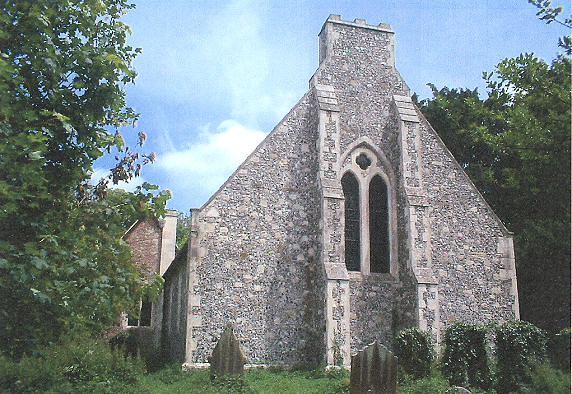
All Saints Church in Waldershare
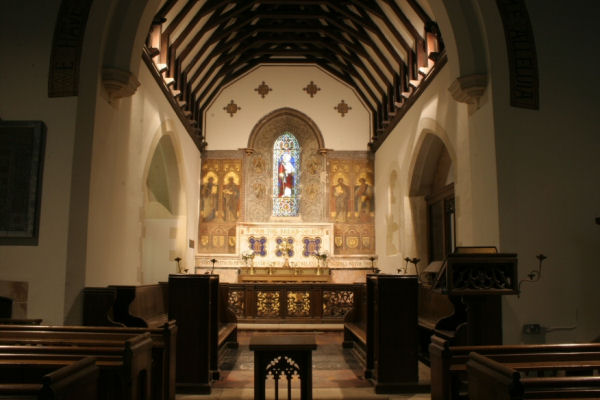
All Saints Church in Waldershare: Interior

5
This is substantially identical to the translation in Donald Bowler,
A Kentish Trail in the Sixteenth
Century, Estes Trails, Volume 12, No.
3 (Spring 1993), at 6.
9.
The information on Henry is taken from Duke, Estes
Family History,
Note 15, (citing here, Niel Gunson, The
English Ancestry of the American Estes
(Mss. 1992) (Senior Fellow in Pacific History, Australian National
University, Canberra)).
10.
Will of Henry
Eastice, Estes
Trails, Vol. 12,
No. 3 (Spring 1993), at 4-5, reproduced in Eastes, Estes/Eastes
Families, Note 1,
at 47.
11.
Deal Parish, Church Records, supplied by L. W. Cozens, Deal, Kent.
A Guide to Deal
Parish Church,
(Rev. A.E.O Anderson, Deal, Kent, 1950).
12
William Easterby, The History of the
Law of Tithes in England: Being the
Yorke Prize Essay of the University of Cambridge for 1887 (C.J. Clay
and Sons, London: Cambridge University Press, 1888)(Google Books),
at 55-57.
13
See notes 4 and 5. See also, Denise Krueger, Estes
Trails, 1992,
Volume 12, No. 2; and, East
Kent Parish Records for 1640-1755 (published
by East Kent FHS) (copies supplied by Alan Dilnot and Josie Morris);
and, IGI.
14
The 1533 will of Alice’s great-grandfather Nicholas Estes
mentioned “Felyx Beans.” Richard Beane is known as a
joiner (cabinet/chest maker) and a record exists of his building the
Deal Parish Chest in 1661, in which the church kept its money. He
made the chest. It was rediscovered in 1949. Keys to the chest were
made for the Church Rector and two church wardens. Duke, Estes
Family History,
Note 15, at 9.
15
Ringwould with Kingsdown Parish Council, Kent Parish Councils,
www.ringwouldwithkingsdownpc.kentparishes.gov.uk
16
“Husbandman” is one that plows and cultivates land.
“Yeoman”
is a term used to indicate a variety of positions or social
classes. In
the 15th century, a yeoman was also a farmer
of middling
social status
who owned his own land and often farmed it himself.
17
Eastes, Estes/Eastes Families,
Note 1, at 54-55, citing Catalogue Ref: Prob: 11/219 Dated 5 Apr
1649, proved PPC 6 December 1651. Ellin would not have been
permitted to submit a will in her name without her living husband's
consent stamped on it. Thus, the fact that Ellin did make a will
indicates that she was a widow, and that Sylvester died prior to 5
April 1649, the date of the instrument. This will is found in the
Archives at Canterbury Cathedral, indexed as “Estes, Ellen of
Waldershare, Number 1649 PRC16/1219 - a widow” and is
available by contacting archives@canterbury-cathedral.org